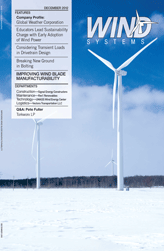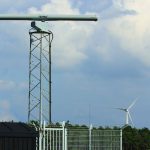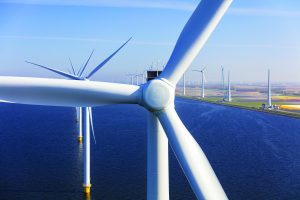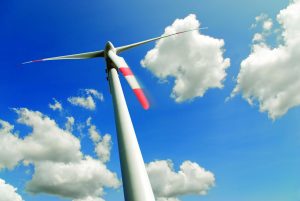As we round out 2012, it is remarkable to know that the greatest number of wind turbines ever in a single year, some 30,000, will have reached their end of warranty over the past 12 months. Regardless of whether the PTC is renewed or not, the project operator’s focus on optimizing O&M costs and improving capacity factor have become the two most significant economic factors in the post-warranty world. We know that improvement in a project’s capacity factor has a dramatic impact on the cost of energy produced and that better O&M — primarily through a reduction in unscheduled maintenance — can be considerably beneficial. Even small incremental steps in these two areas can achieve especially large reductions in the cost of energy, and it is important to begin the continuous improvement process well before the warranty ends.
While scheduled wind turbine maintenance costs are relatively low, unscheduled maintenance can be another story. Under maintenance and warranty agreements, the turbine manufacturer has shouldered much of the burden related to unscheduled maintenance and repair of wind turbines. As that responsibility is now shifting, the unscheduled maintenance costs that have degraded profits of turbine manufacturers during the warranty period are beginning to hit owners, negatively affecting a wind company’s profitability. It is imperative that the owner learns the real value of the warranty service (e.g. parts cost, labor, and repair time), as these are the true indicators for what is coming next. With high repair costs and downtime on the line, this is no time to skip an end-of-warranty inspection that can pay back with just a single finding while providing the owner with a broad picture of the health of their project.
Gearbox rebuilds are one of the most costly maintenance items for a wind project. Not only are the replacement parts expensive, but major expense is associated with mobilizing the crane needed to repair these components. In addition to the actual crane costs, there is typically a long lead-time to get the crane to the site and set up, resulting in longer than expected downtime and additional lost production revenue. Added to lost production revenue, one post-warranty gearbox failure can account for as much as 10-15 percent of the price of the turbine. For these reasons, thorough gearbox inspections are imperative during the end-of-warranty walk down and should be all-inclusive with oil analysis, vibration monitoring, and borescope inspections.
Although many gear failure issues have recently been addressed by manufacturers, high-speed shaft bearings, planet bearings, and ring gears remain prominent failure areas. Notwithstanding these common faults, most gearbox failures are believed to be directly related to poor lubrication and lack of proper maintenance. Sources of contamination that existed even prior to the gearbox being placed into service can serve to damage the gearbox bearings during the warranty period. To help determine the health of gearboxes and bearings, oil and grease analysis should be conducted on these systems. In addition to capturing this information during the end-of-warranty inspection, testing for water, contaminants, and spectroscopy for wear metals should have been part of an ongoing analysis program while under warranty.
Gear mesh vibration frequencies are typically easy to recognize, but not easy to interpret. This is due to two reasons: It is not normally possible to place a transducer close to the problem gears; and the number of vibration sources in multi-gear units is abundant and complex. Although it may be obvious to an operator that a wind turbine gearbox is noisy, without an expert and qualified vibration monitoring analysis it becomes difficult to tell which bearing has the issue, where it is, and if something else is causing the problem. For end-of-warranty inspections, a qualified vibration data collection and analysis can pay huge rewards if anomalies are discovered. This intelligence can also support borescope inspections, which search in problem areas and digitally capture the physical condition of the internal gears and bearings.
A good end-of-warranty inspection should also include a review of all service reports and parts usage during the warranty period. This will bring light to issues that are recurring, especially for turbines that suffer repeated parts replacement or service. In addition, an assessment of past service history will determine if the warranty provider performed all service work that was required, and if it was completed in accordance to the scheduling stipulations of the manufacturer.
Once a final report is provided, an owner will have sufficient information to fully evaluate the condition of their project. Knowing the material history of the turbines helps to gain insight on issues that will carry into post-warranty service. This knowledge of serial defects, predictive failure rates, and inventory usage will establish a path forward to improve O&M and make reductions to turbine downtime. It can also be expected that once the OEM turns the turbines over, the owner will inherit any unresolved issues. The last thing you want is a “fixer-upper” with deferred maintenance issues.


































